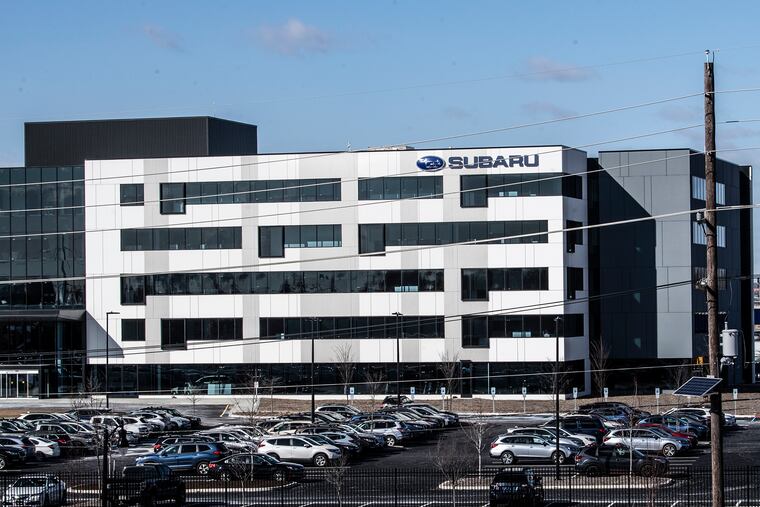Trenton and Camden must ensure the state’s much-maligned tax incentives finish the job in the city
State tax breaks that have sparked a development boom in Camden have come under withering fire by New Jersey Gov. Phil Murphy and others.

The future doesn’t look too promising for the super-generous state tax breaks that have brought brand-name companies and flashy new corporate headquarters to Camden.
But even if the state Economic Development Authority’s Grow NJ and Economic Redevelopment and Growth (ERG) programs expire as scheduled on June 30, I believe owners of projects completed or in the pipeline should be persuaded — or required — to hire as many Camden residents as possible for jobs created or retained during the life of the tax breaks.
And if they won’t or can’t do that, why not retroactively reduce some of those tax breaks? It might be worth a try.
Gov. Phil Murphy does seem determined to revamp the statewide incentives, which were dramatically expanded under his Republican predecessor, Chris Christie, excoriated by the audit the Democratic governor asked for three days after his 2018 inauguration, and challenged in an analysis released last July by Rutgers University.
The 72-page audit by state Comptroller Philip James Degnan arrived earlier this month and read like a rebuke of the administration, management, and impact of $11 billion worth of tax breaks awarded to 1,000 economic development projects across New Jersey. The audit questioned the reliability of reported job creation numbers and cited “numerous deficiencies in EDA’s administration of the incentive programs that we believe are representative of systemic failures.”
Murphy amplified the critique last week during his State of the State address, assailing the “wasted money, phantom jobs, squandered opportunities, and misplaced priorities” of the tax breaks. Neither Camden nor specific projects in the city or elsewhere were named in the audit or in Murphy’s address.
But the governor nevertheless evoked a ferocious and somewhat uncharacteristic response from Camden County Freeholder Director Louis Cappelli Jr., who painted Murphy as hypocritical for having used every available incentive during his unsuccessful attempt to lure Amazon’s second headquarters to Newark.
Rather than "trying to demonize all of the companies who have worked to be part of a once-in-a-lifetime transformation in Camden,” Cappelli said in a statement, the governor ought to have “celebrated” the city.
That task was carried out in a different analysis — this one by Econsult SolutionsInc. of Philadelphia — that was commissioned by the Rowan University/Rutgers-Camden Board of Governors and made public just hours before Murphy’s address. A happy coincidence.
Titled “The Positive Impacts of Investments in Camden, N.J., on Social Determinants of Health,” and featuring a foreword by former Gov. Jim Florio, the 44-page report deftly presents the “Camden Rising” narrative that has been assiduously crafted over the last decade through the efforts of political power broker George E. Norcross III and his allies.
With data about improvements in public safety, public education, and infrastructure, as well as new economic opportunities, the report certainly demonstrates that more than just tax breaks are at work in the city.
But the incentives clearly have been key to building the perception of Camden Rising. Norcross’ own company, the insurance Conner Strong & Buckelew, is among the lead tenants in a high-rise approaching completion on the Camden waterfront as part of a redevelopment project that got a $245 million tax break.
The adjacent corporate headquarters of American Water ($261 million), the nearby Philadelphia 76ers Training Complex ($82 million), and the Subaru of America corporate campus ($118 million) just off Admiral Wilson Boulevard are among about 30 sites large and small in Camden that have collectively obtained $1.5 billion worth of incentives.
Critics such as those at the progressive think tank New Jersey Policy Perspective have long derided the state’s incentives as corporate welfare. But last July marked the start of a run of especially bad publicity.
A Rutgers analysis urging that tax breaks be tied more closely to job creation in the city was followed in September by an ROI-NJ interview with Kris Singh, CEO of Holtec International. Despite his firm’s having received a $260 million incentive, Singh said he had found it challenging to recruit, train, and retrain Camden residents for entry level and other jobs at its massive new South Camden plant.
The remarks, which he later said had been taken out of context, spurred Camden Mayor Francisco Moran, U.S. Rep. Donald Norcross (D., N.J.), and other officials to host a job fair for city residents and announce a new “Camden Works” training program.
I’ve heard this sort of thing about every taxpayer-subsidized development project in Camden for nearly 40 years. So on Monday I asked Cappelli what’s different this time.
“We are now doing more than has ever been done,” he told me. "We are working with each of these companies to set up training programs for city residents. Holtec is opening a training center at its plant.
“We’re going to continue to do this regardless of what Murphy does,” said Cappelli. “A lot of these jobs are yet to come.”